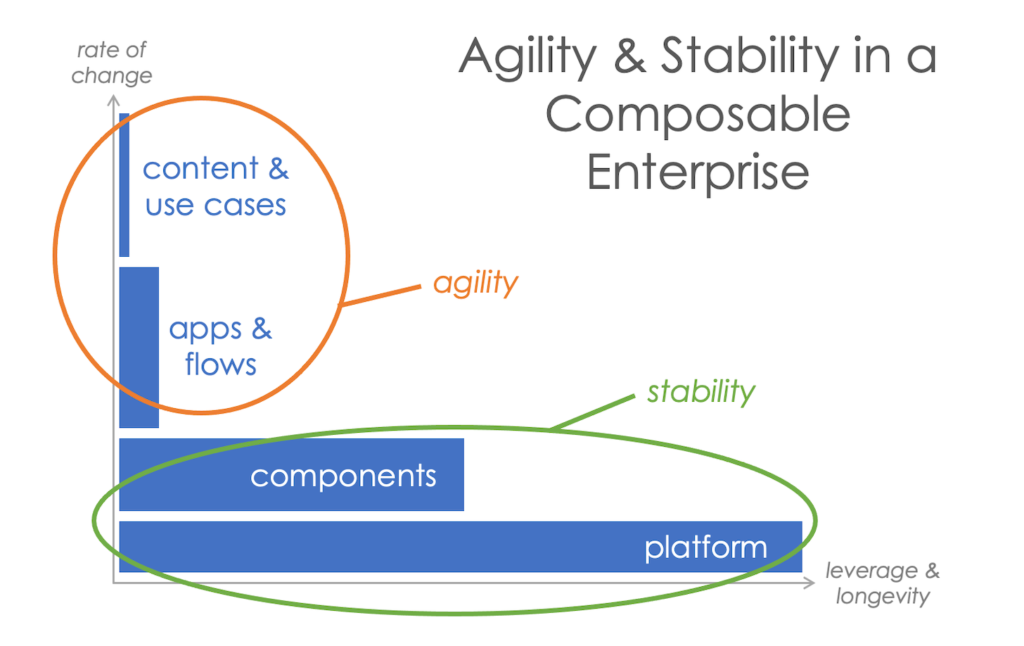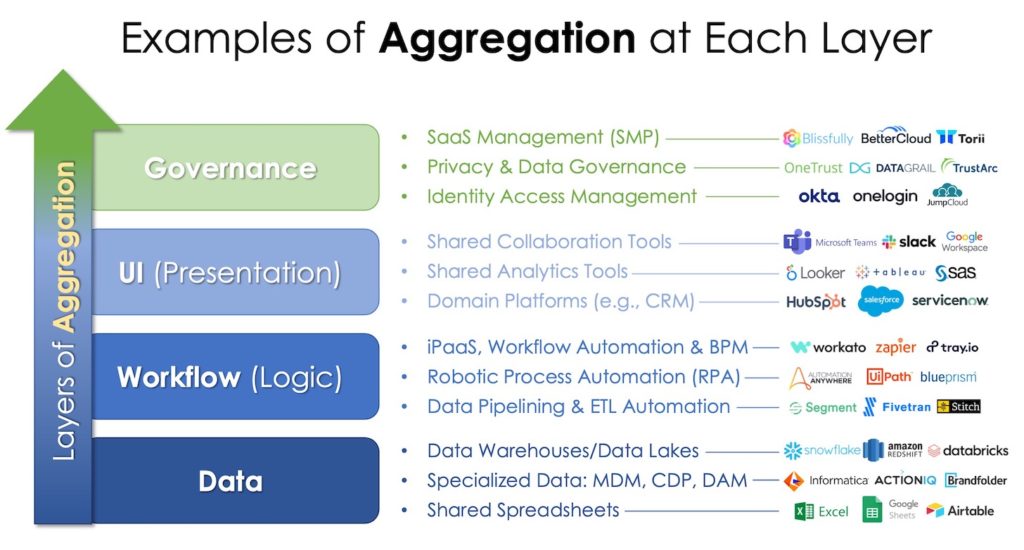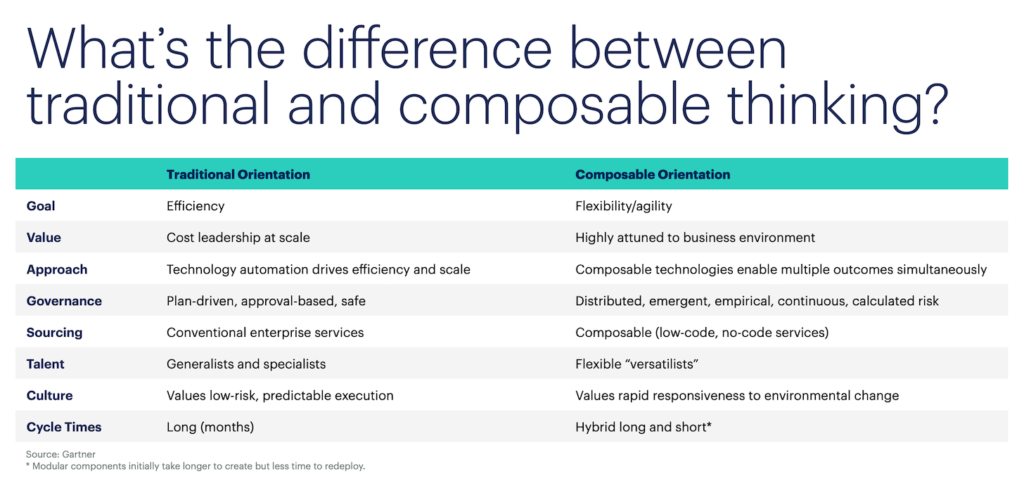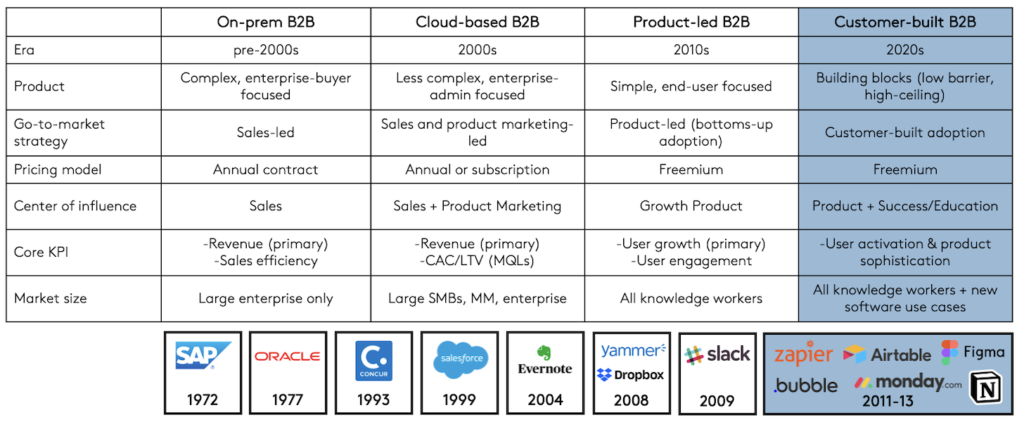
Traditional business thinking views change as risk, while composable thinking is the means to master the risk of accelerating change and to create new business value.”
Monika Sinha, Research VP, Gartner
That’s a quote from Monika Sinha, a research VP at Gartner, announcing the 2022 Gartner CIO and Technology Executive Agenda. The “composable enterprise” is term that Gartner uses for businesses that leverage technology and digital process automation as a modular set of Lego Blocks and malleable workflows to innovate and adapt their services and operations.
It’s the antithesis of being locked in to the rigid and fragile monoliths of Ye Olde Times.
It’s part of the long arc of wrestling with Martec’s Law — that technology changes faster than organizations do, but organizations that are able to adapt more quickly than their competitors win. Instead of constantly fighting change, which is inevitably a losing battle, they intentionally embrace it as a competitive advantage.
In software engineering, the shift towards microservices, API-first development, serverless computing, etc., have all been steps that lean towards “composability.”
In martech, you could argue that martech stacks have been examples of composable-like functionality too. Admittedly, the coherence of these stacks were often quite crude at first, leading to marketing’s own Quest for the Holy Grail of better app integration. But as martech app platforms continue to strengthen their ecosystems, more and more apps become true plug-and-play options, instead of do-it-yourself assembly with Scotch tape (emphasis on the Scotch) and rubber bands.

The pattern of aggregation theory in tech stacks — where platforms from data warehouses like Snowflake to collaborative communications centers like Slack increase in value as you connect more things to them — is steadily turning “stacks” into virtual platforms, helping to enable such composability.
However, this is a very different — and for many, uncomfortable — way of thinking. For decades, the mantra has been consolidation, both in the market and in our tech stacks. While composability and aggregation rest on a certain degree of consolidation, at the platform layer, their value is in enabling greater diversity at the apps-and-ops layer of business.
Gartner offers a summary of differences between traditional and composable thinking:
 You have to read between the lines and squint a little bit, but the shift in emphasis towards flexibility/agility, enabling “multiple outcomes simultaneously,” distributed and emergent governance, etc., all support a fluid and diverse app and ops landscape inside the business. It epitomizes platform centralization to support use case decentralization as I proposed in The New Rules of Marketing Technology & Operations a few years ago.
You have to read between the lines and squint a little bit, but the shift in emphasis towards flexibility/agility, enabling “multiple outcomes simultaneously,” distributed and emergent governance, etc., all support a fluid and diverse app and ops landscape inside the business. It epitomizes platform centralization to support use case decentralization as I proposed in The New Rules of Marketing Technology & Operations a few years ago.
Gartner explicitly links this to the low-code/no-code movement. Low-code/no-code — LCNC, as the cool kids call it — platforms provide the digital breadboards upon which business technology and ops professionals can arrange workflows, automations, and custom apps in a drag-and-drop fashion. These AI-powered, no-code tools are imbuing marketers with superpowers to quickly build a widening range of front-stage customer touchpoints and back-stage operational processes in a mostly self-service fashion.
David Peterson, a partner at Angular Ventures, published a great article on this last month, claiming this as the rise of “customer-built growth” and how the no-code design paradigm is revolutionizing enterprise software. I found this table of his fascinating:

He sees these composable LCNC platforms as a new wave of software, and I think he’s right. Startups have been using these platforms to the hilt over the past couple of years. The “composable enterprise” narrative from Gartner will help legitimize their adoption in larger businesses now too.
All of this feeds into The Great App Explosion — including both API-enabled, integrated-out-of-the-box commercial apps as well as custom apps built on cloud platform APIs with LCNC tools. We could quibble over the definition of an “app” perhaps. But there’s no denying that the number of discrete software thingys operating in our digital environment is only increasing.
Managing that drives us into the post-Big Data era of Big Ops.



